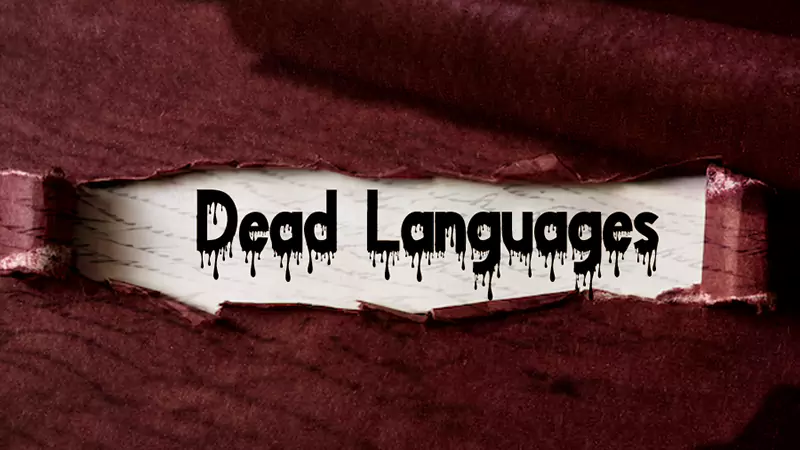
What is the quickest way to come off as super smart? Apart from wearing glasses, it would be knowing an additional language. Even better if you know quite a few. And to become the coolest nerd, try one of the ancient dead languages. Just a few quotes in Latin, and you have that elegant, scholarly vibe.
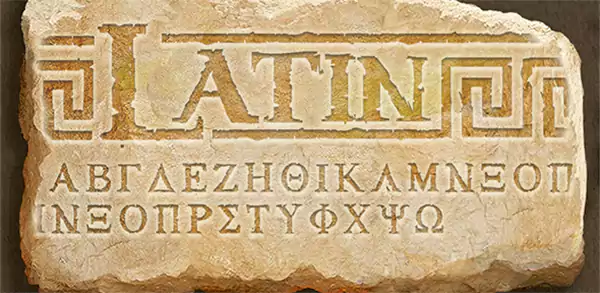
Languages have a charm of their own. They facilitate communication and therefore help start new connections. No matter what country, community, age bracket, or era people belong to, everyone has developed a language for communication.
There are thousands of active languages today. And there were plenty in the older times as well. Most of these lost their native speakers and are now identified as dead languages.

As the saying goes, “Nothing is permanent”. Creatures and cultures all perish one day; that is the natural law. And like many other things, languages have a lifespan too. However, they have an advantage. Dead languages can be revived. And learning them is the way.
So all the linguistic geeks, grab your notepads and get ready; we have some languages to save.
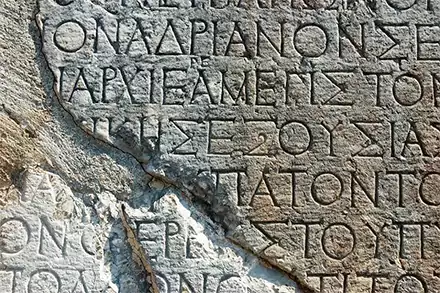
This write-up talks about dead languages at length and walks you through some of the dead languages examples. Continue scrolling or follow the text features of our table of contents for a speedy read.
All languages are basically intricate, organized systems that have emerged and evolved based on human intelligence and need. They follow an individual set of sound, syntax, and grammatical rules. Their growth and aging, and the subsequent modifications, are entirely natural. Different communities have their own native language, which may or may not be understandable for the other communities.
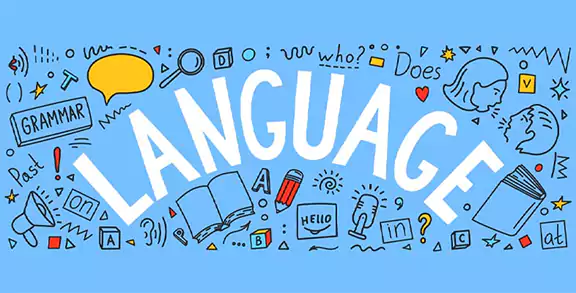
Learning a new language helps you connect to its indigenous culture and people. Likewise, dead languages help you peek into the pages of history. Before suggesting you a list of dead languages to learn, let us give you a formal introduction to them.
What is a Dead Language?
A language is declared to be dead when there are no existing native or fluent speakers. However, it still exists in the form of manuscripts that can help reconstruct the language.
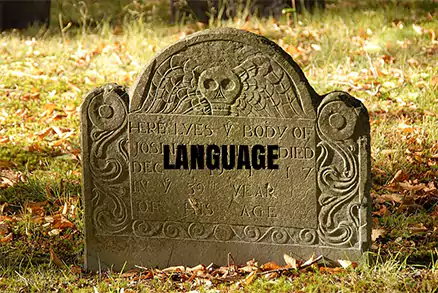
A dead language should not be confused with an extinct language. An extinct language has not only lost its active native speakers but also doesn’t have enough documents to help decipher it. Berber, Osage, Breton, etc., are some of the extinct languages.
They are no longer spoken and are therefore forever lost. In some cases, there might be some ancient manuscripts available. However, it becomes impossible to decipher them as there are no references or explicit instructions for guidance.
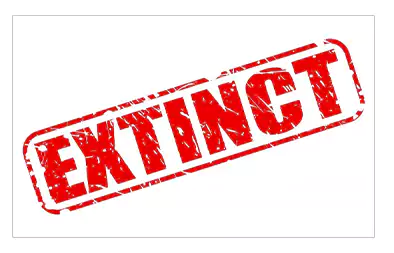
Language shift or language replacement is the most obvious cause of language death. When a native speech community chooses a second language over their native one, the first language slowly fades away and becomes a dead language.
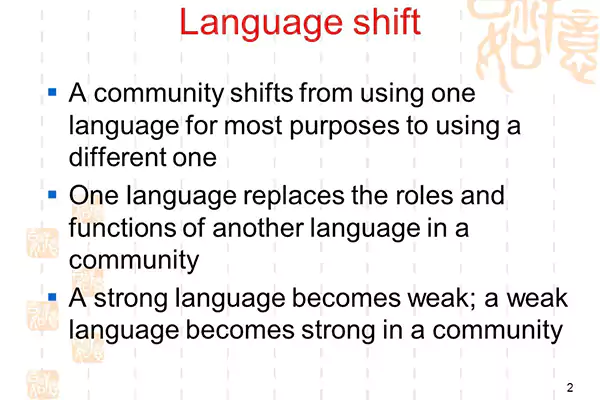
There are actually several kinds of language death:
- Gradual Language Death: When the speakers of a language start using a second language more due to its popularity or status, it can contribute to the fading of the first language.
It begins with learning a new language and then focusing more on it. This shift is to the point that the original language is not passed on to the next generation, and thus slowly loses all of its fluent native speakers.
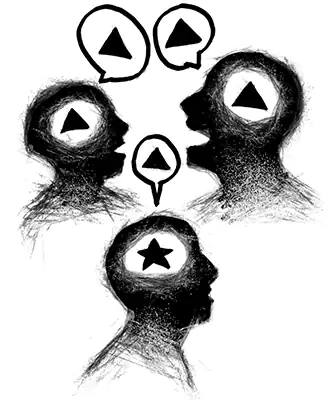
- Top-to-Bottom Language Death: In this scenario, the language shift begins with an authoritative body (like the government), and the locales are still unaffected by it.
- Bottom-to-Top Language Death: When the usage of the language is limited to formal purposes like literary works, religious texts, formal occasions, etc.
- Radical Language Death: When a speech community is forced to refrain from their heritage language, their language dies a radical language death. This event mostly follows some sort of colonization, where this is a form of oppression.
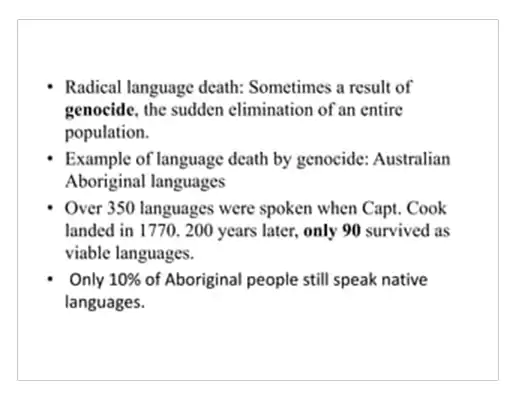
- Linguicide: This is a sudden event. When an entire group of native speakers of a language perishes owing to some large-scale catastrophe, like war, genocide, natural calamity, etc., their language faces linguicide.
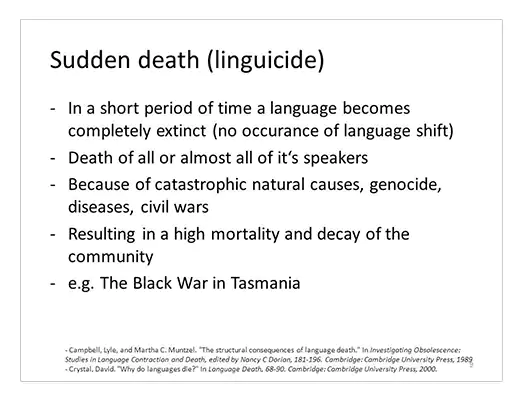
- Language attrition: When a second language starts replacing the first language of a speaker, chances are the speaker might lose proficiency in the original language. When the language fades due to a loss of fluency and comprehension of it, the phenomenon is called language attrition or language loss.

- Migrational reason for language death: A native speech community might have to travel to new lands for better survival conditions. When this happens, the new culture interferes with the group’s existing culture and starts to slowly replace it. Thus, a gradual language death occurs over an extended period of time.
Out of these, gradual language death is the most common, where a heritage language gets replaced by a secondary language.
Getting to know ancient dead languages helps us to have a higher level of cultural connectivity. We can understand texts of older civilizations, appreciate and adopt parts of their culture, and learn from their wisdom. Not only that, but we can also learn and understand modern languages better, along with easily comprehending the modern usage of dead languages.
It is time to answer the central query of the article and know about some dead languages.
What are Some Dead Languages?
Ethnologue says there are almost 7,117 languages in the world right now. The reference publication presents well-researched stats and information on the world’s living languages annually. And the latest edition lists more than 7,000 languages in use.
However, this number is rapidly changing. Almost 2,400 languages of the world are in the vulnerable category and may soon join the dead languages list.

But what is this list? What languages does it contain? What are the dead languages? Let us now meet some of our ancestral languages and know some fun deets about them.
- Latin: The oldest yet the coolest dialect of all. The flourishing timeline for Latin was from the 7th century BC – the 18th century AD. A classical Indo-European language, Latin comes from the Latium region of the Roman Empire. It was dominant in the Italian region and later in the Roman Empire.
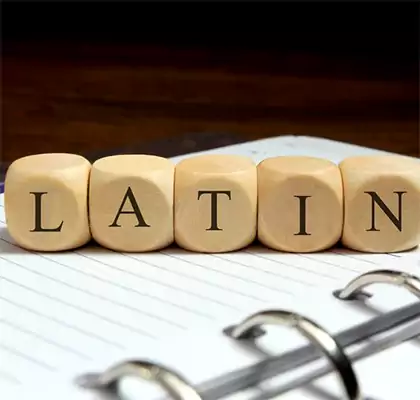
The form of Latin that is in use is called Contemporary Latin. However, the usage remains limited to religious purposes (in The Vatican City), writing mottos by some countries, and organizational work.
- Language Family: Indo-European.
- Active Timeline: 7th century BC to 18th century AD.
- Region: Roman Empire, early Modern Europe, and still in the Vatican City.
- Script: Etruscan alphabet
- Versions: Old Latin, Classical Latin, Vulgar Latin, Late Latin, Medieval Latin, Renaissance Latin, New Latin, and Contemporary Latin.
- Languages derived from it: English, Italian, French, Spanish, Portuguese, Romanian, Venetian, Corsican, Neapolitan-Sicilian, Catalan, Galician, Romansh, and Sardinian.
- Important Manuscripts: The Harley Aratea, Petrarch’s Livy, The King’s Virgil, and The earliest manuscript of Vitruvius.
Did You Know?
The language is written from left to right script, which is different from other ancient languages, like Hebrew and Arabic.
English can trace back its roots to Latin, as a huge part of it is derived from the latter.
Many official mottos are written in Latin (like in the Philippines).
There’s a Latin language version of Wikipedia called the Latin Wikipedia. It was created in May 2002 and has over 130,000 articles.
- Sanskrit: From holy books to computers, Sanskrit has got range. This is an Indo-Aryan language that was born in the late Bronze Age (3300 BC to 1200 BC), in South Asia.

Sanskrit is a language of religion, as the sacred texts of Hinduism, Buddhism, and Jainism are written in the language. The dialect has influenced the various tongues of South Asia, Southeast Asia, and East Asia. Sanskrit has been deemed to have a logical structure, and learning it fuels the analytical part of your brain. It is one of the most useful dead languages to learn.

The biggest contributor to the death of Sanskrit could be its restricted usage by the Brahmins (priests) and the upper-class folks. In ancient times, Sanskrit was the language of the curricula of traditional Indian educational institutions called Gurukul.

Many Indian schools still teach Sanskrit, which can be seen as an attempt to keep the language alive. The language is taught through stories, written assignments, enacting plays in the language, reading, and dictation. This type of kinesthetic learning approach helps one learn even the toughest languages effortlessly.
- Language Family: Indo-European, Indo-Iranian, Indo-Aryan Sanskrit.
- Active Timeline: 1500 – 600 BCE (Vedic Sanskrit), 700 BCE – 1350 CE (Classical Sanskrit).
- Region: India and Southeast Asia.
- Versions: Vedic and Classical.
- Languages derived from it: Hindi, Bengali, Punjabi, Gujarati, Marathi, Rajasthani, Assamese, Urdu, Nepali, Sinhalese, Maldivian, and Romany, with contributions to English as well.
- Important Manuscripts: Rigveda, Mahabharata, Ramayana, the Bhagavad Gita, and Puranas, to name a few.
Did You Know?
Computer language FORTRAN is based on Sanskrit.
The upcoming 6th and 7th generations of computers are said to be based on the Sanskrit language.
With over 70 synonyms for water and 96 words for love, Sanskrit has the biggest lexicon (vocabulary) in the world.
Sanskrit is believed to help in Speech Therapy.
There is also a newspaper published in the language. It’s called Sudharma and is being actively printed since 1970 in the Karnataka state of India.
Sanskrit is recognized by the Constitution of India as one of the Scheduled languages.
The Benares Sanskrit College (founded in 1791) is the oldest Sanskrit language college in the world.
- Ancient Greek: Socrates, Plato, Aristotle, and Pythagoras, who hasn’t heard about these legends. Apart from owning intellect of the highest degree, they have one more thing in common. They all spoke ancient Greek.
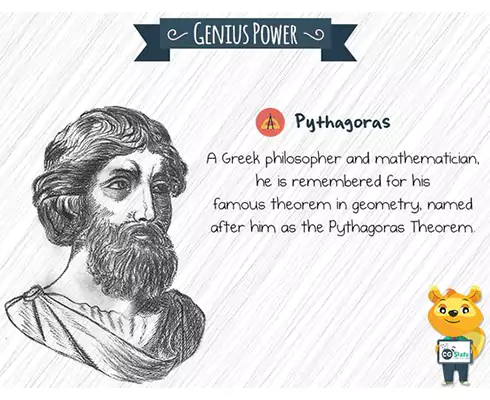
Today we have access to ancient Greek texts and teachings. These manuscripts have made revolutionary contributions to modern-day science, philosophy, and language. From the Pythagorean theorem to Socrates’ ideas, these polymaths have managed to impact almost everything.
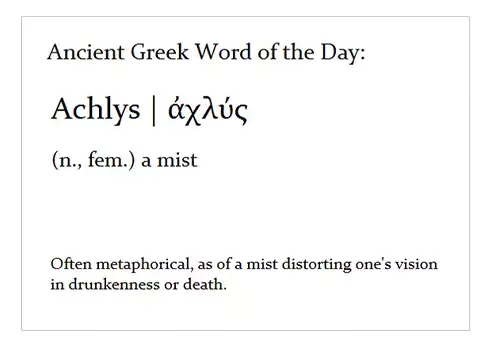
There are many words, letters, and symbols that have been borrowed from this ancient dead language. Currently, the national language of Greece is Greek, which is the modernized version of its predecessor.
So if you are wondering, “Is Greek a dead language?”, the answer is: it just had a makeover.
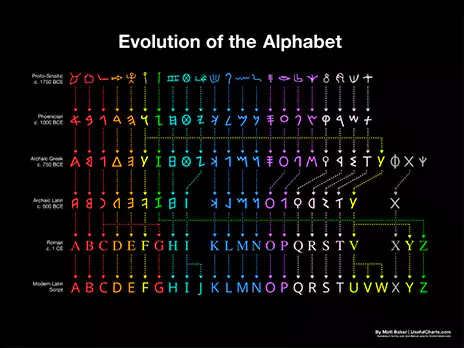
- Language Family: Indo-European, Graeco-Phrygian, Hellenic Greek.
- Active Timeline: 1200 BCE – 323 BCE.
- Region: Greece and along the western coast of Turkey.
- Versions: Ancient Greek, Koine, Byzantine Greek, and Modern Greek.
- Languages derived from it: Greek can be called the root of all languages.
- Important Manuscripts: The Iliad and the Odyssey, the Apology of Socrates, Homeric Hymns, etc.
Did You Know?
Ancient Greek has the longest word in the world. It is Lopadotemachoselachogaleokranioleipsanodrimhypotrimmatosilphioparaomelitokatakechymenokichlepikossyphophattoperisteralektryonoptekephalliokigklopeleiolagoiosiraiobaphetraganopterygon, with 182 characters.
It was coined by Aristophanes, as a fictional dish, in his comedy Assemblywomen.
The word alphabet is the combination of ‘alpha’ and ‘beta’, the two first letters of ancient Greek.
The Greek alphabet invented vowel sounds.
‘Greeklish’ means writing Greek using the Latin alphabet.
- Old English: This is the mother of contemporary English. It is also known as Anglo-Saxon, owing to the Anglo-Saxon settlers who introduced it to Great Britain in the mid-5th century. Old English has its roots in German and is the true representative of Germanic and modern English connections.
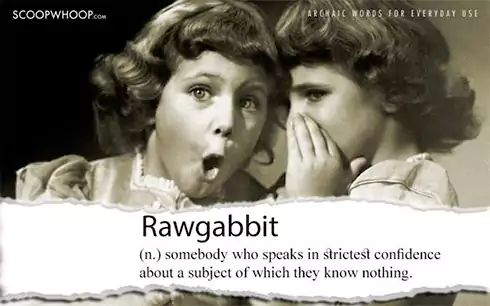
- Language Family: West Germanic Language.
- Active Timeline: Approximately 500-1066 AD.
- Region: England and southern and eastern Scotland.
- Dialects: West Saxon, Kentish, and Anglian.
- Languages derived from it: English, German, Dutch, Icelandic, West-Flemish, and Frisian.
- Important Manuscripts: Beowulf, Caedmon’s poems, Cynewulf, the Anglo-Saxon Chronicle, and the writings of King Alfred.
Did You Know?
The word “town” is an Old English word that is still in use without any modifications.
The longest word in English is ‘Pneumonoultramicroscopicsilicovolcanoconiosis’. It contains 45 letters and is a type of lung disease. Frisian, the national language of the country of Frisia, is the closest descendant of Old English.
‘E’ is the most commonly used letter of the English alphabet.
The first ever dictionary in English was invented in 1755.
- Biblical Hebrew: The language of Moses, Jeremiah, and the Old Testament. Biblical Hebrew is different from modern Hebrew in terms of its style, grammar, and vocabulary.

Even though Biblical Hebrew became an ancient dead language, it was revived in a new format in the 19th century by the Jews of Israel and Palestine. This is the only case of successful language revival in the world. Language in itself has certain complexities, which makes it the perfect enigma for puzzle addicts.
- Language Family: Semitic language family.
- Active Timeline: Approximately between the 10th century BC and 70 AD.
- Script: Paleo-Hebrew alphabet, Samaritan script, Imperial Aramaic alphabet.
- Versions: Biblical Hebrew, Mishnaic Hebrew, Medieval Hebrew, Modern Hebrew.
- Languages derived from it: Modern Hebrew, Arabic, Amharic, Tigrinya, etc.
- Important Manuscripts: The Old Testament or Hebrew Bible, Jewish liturgy.
Did You Know?
Hebrew is read from right to left, except for the numbers, which are written from left to right.
Hebrew is called the Holy Tongue (Lashon Hakodesh).
The Rabbinic tradition considers Hebrew to be the ‘original language of Humanity’.
Hebrew does not have any vowels.
These are a few of the ancient dead languages. Now, that you understand the concept of dead languages, you must be wondering how it happens. What causes the death of a language? The next section answers this query in detail.
How Does a Language Die?
The simplest answer to this question is that languages die because people stop using them. In most languages, death is a very slow process, and sudden language death is rare.
So what is the story behind dead languages? Following are some insights as to why languages die:
- Learning a new language is good. It enhances our cognitive abilities and adds to our overall skill set. However, when the additional language starts to replace the legacy of the heritage language, the original language suffers the consequences.
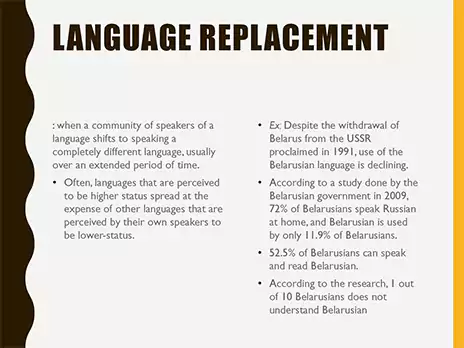
People go for the new language, probably because it symbolizes higher prestige, and that’s when their native language takes a backseat. Children do not inherit the native language from their parents, and thus slowly its native speakers cease to exist.
- Language termination can also be the result of tyranny. When a new leader forces the people to adopt a new language, people are compelled to stop using their original language. People also switch languages to hide their identities.
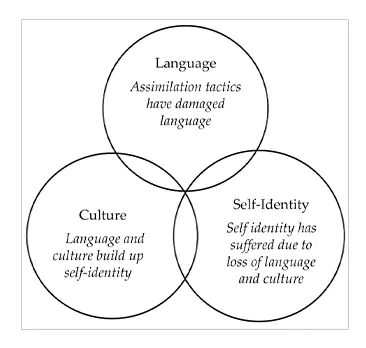
- Throughout history, there have been many instances where a language has gone through a modification phase. This is called pseudoextinction. This happens when the language is modernized, new words are invented and incorporated. It isn’t actually a case of language death, but rather an upgrade.
- One more reason could be limitations. Sometimes people in power limit the usage of a language among only certain upper-class circles. When the language is not promoted enough, it is easier to lose it.
Thus, a language is lost. A language that was, at one time, very much alive. Emotions flowed through it, people talked, sang, and laughed in it. It defined them. This loss becomes the reason for many more cultural losses. When the later generations cannot make sense of the ancient scripts, the associated civilization is forever lost.
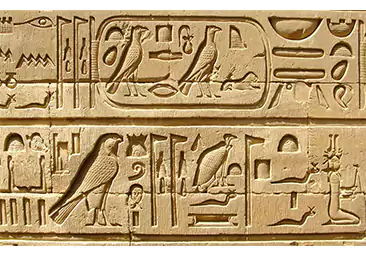
The good thing is people are making efforts to connect to ancient civilizations. Steps are being taken to restore dead languages. And it begins with determining which language is dead. Additionally, we also need to preserve current languages that are on the verge of dying.
How to Identify a Dead Language?
As said before, languages don’t die a sudden death. All dead languages might have gone through an extended process with many “levels of endangerment”.
A language is considered dead even if it has active, native speakers if the speakers belong to the older generation only. Thus, it is crucial to pass on the language to the newer generation in order to preserve it.
One way to determine the level of danger any language is facing is the five-point scale:
- Strong/Healthy: The language is spoken by a large percentage of people from all generations.
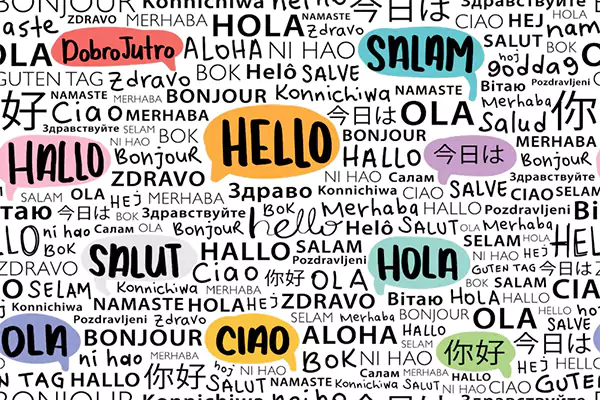
- Weak: The extensive use is limited to the older generation alone, as the younger generation lacks fluency. Tlicho (Dogrib), Kamang, and Gagauz (Bessarabia) are all examples of weakening languages.
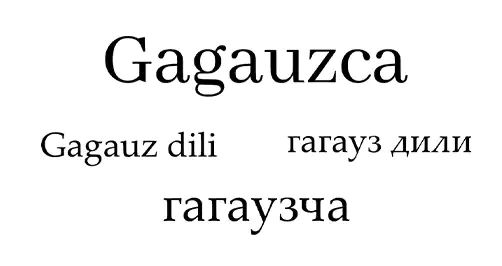
- Moribund: The fluent speakers are just a few, and the younger generation is adopting other languages as their native language.

- Dead: The language is no longer the official language of any community, yet its legacy is conserved through documentation and manuscripts.

- Extinct: All active speakers have ceased to exist. Additionally, written records are also pretty scarce.
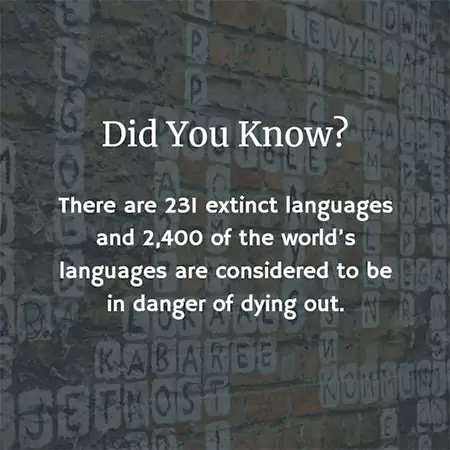
There are also five levels of endangerment by ‘UNESCO’s Atlas of the World’s Languages in Danger’:
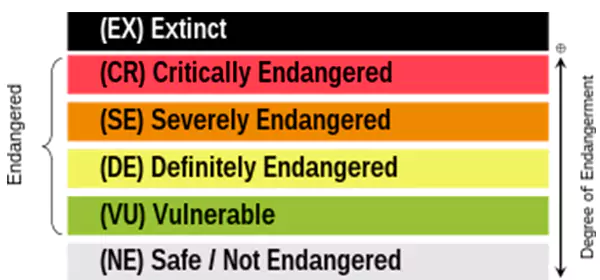
- Vulnerable
- Definitely Endangered
- Severely Endangered
- Critically Endangered, and
- Extinct
All these stages provide a perspective about any language. For instance, if a language falls into the ‘vulnerable category’, it means that the younger generation does use the language extensively, but it is limited to a small geographical area.
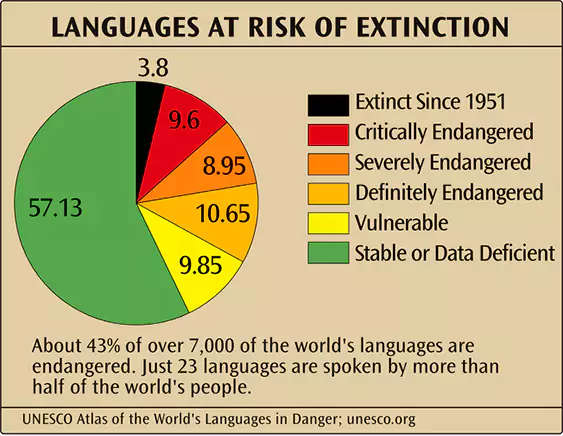
A language that is no longer taught to toddlers and thus, the younger generation does not identify it as their mother tongue, is ‘definitely endangered’.
A ‘severely endangered’ language is used only by the older generation. The successors may understand it a bit but are not passing it on to their offspring.
Languages become ‘critically endangered’ when even the older generation does not use them frequently.
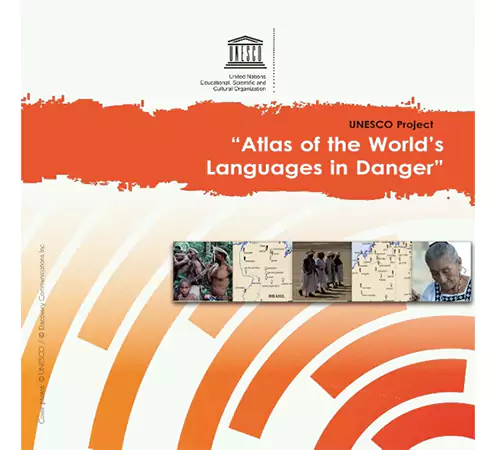
Currently, a total of 2,500 languages have been analyzed as per this framework.
Languages also die when they lack flexibility. By flexibility, we mean the ability to invent and accommodate new words describing emerging situations.
If the languages are not adaptable or are hard to learn, they easily get replaced with simpler and more versatile versions or languages. The world has seen the extinction of over 200 languages in the last three generations alone.
Apart from the aforementioned five-point scale, there also exists a more elaborate 7 parameter scale to analyze language endangerment.
| Parameter | Attribute | Determinant |
| #1 | Age | Percentage of users in each age group and age of the youngest user |
| #2 | Demographics | The more people identify the language as part of their ethnicity, the safer it is. |
| #3 | Language Use | How predominant is the usage at home, work, gatherings, education, mass media, commerce, religious institutions, etc.? |
| #4 | Cultivation, Development, Literacy, and Education | Literary accounts like oral literature, orthographical materials, print literature, elementary, secondary, and tertiary education materials, etc. |
| #5 | Status and Recognition | Official and/or semi-officials titles. |
| #6 | Language Attitudes | Are the speakers proud of their heritage language and value it enough to preserve and promote it? |
| #7 | Amount and Quality of Documentation | Bilingual dictionaries, Word lists, text, audio, and video collections, grammatical, and phonological Descriptions. |
The current state of a language is measured against these 7 parameters, which reveals how safe the language is. The more criterion it fulfills, the safer it becomes.
Languages like English, French, Japanese, etc., will definitely satisfy all the parameters mentioned above. And obviously, none of the dead languages will follow any of these. That’s how you identify them.
A dead language has manuscripts as existential evidence. Also, in some cases, there might be a handful of active, native speakers alive. These factors help in the reconstruction of the language. Let us now get to know the exact process that can restore an ancient dead language.
How to Bring Back a Dead Language?
To tap into the superpower of language rebirth, we need language revitalization. It is also known as reversing language shift. In practice, there are two terms: language revival and language revitalization.
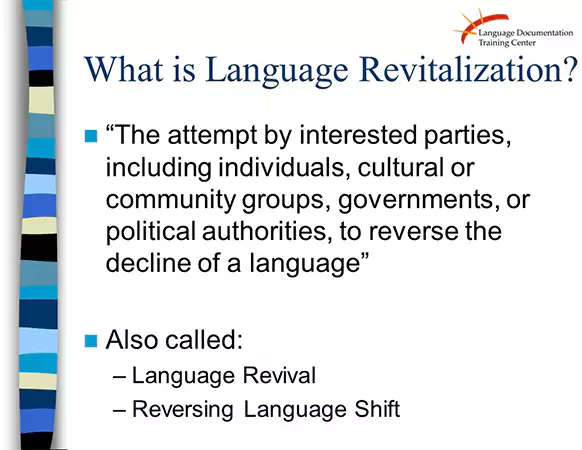
Language revival means the restoration of an extinct language that has no native speaker and very little documentation. Ancient dead languages that are used to understand ancient cultures have gone through this process.
And language revitalization is the process of protecting, preserving, and promoting a dying language to stop it from becoming extinct. The languages which are losing their popularity and are left with a very limited number of users are taken into account. Both processes rescue a language from being forgotten.
No matter what steps are taken, the one true goal is increasing the number of speakers and encouraging active usage. The process begins with identifying the state of the language. This is dependent upon three factors:
- The number of active speakers.
- The average age of native and fluent speakers.
- The number of people of the youngest generation who are acquiring the said language as their first language.
The above-mentioned factors help categorize a language as dead or extinct. The next step is language revitalization, or revival as per needed.
One of the most successful models for reviving dead languages is ‘Fishman’s model for reviving threatened (or sleeping) languages’. It has these 8 stages:
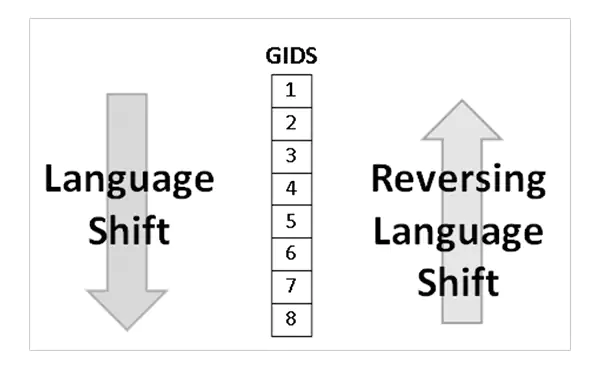
- It begins in an area where the language users are either very elderly, very limited in number, or do not exist at all. In this case, the people, who have had active interaction with the dead language or its daughter languages, are asked to learn the language properly.
- The next step would be to create communities that will actively use the language in the spoken format. The pronunciation should be perfected, as this is also one of the fundamentals of the language. Tougher words should be broken down as sounds rather than syllables (like done in The Orton Gillingham Reading Program).
- When people are or become fluent in the said language, it is time to use the language more informally. People should be encouraged to use the language as much as possible within all age groups.
- After people become orally fluent in the language, it is time to promote written proficiency. A hands-on learning method like writing helps learn and retain the languages easily. Also, this is the stage of educational inclusion of the language. This means now it is time to study all aspects of the language, like syntax, grammar, etc.
- The said language should be made a mandatory part of the curriculum, wherever possible.
- Usage of the language should be encouraged in the workplace as well.
- Follow by usage in mass media and government institutions.
- People should be encouraged to pursue the language as a part of higher education.
These stages have to be followed in a strict sequence, as the results of the preceding step define the next step.
In some cases, language immersion also helps. It is the process of using an additional language for educational instruction. The second language could be a dead language. This way, it becomes easier for children to learn the language, and they retain it better too. Different subjects can include different languages. This way students get a variety of dead languages to learn.
The most successful example of language revitalization is the revival of Hebrew. From being a dead language to becoming the official first language of millions, this is a rare and inspiring phenomenon of the total revival of a language. Today, Hebrew is the national language of Israel. Language revival actually has mental health benefits, as people become happy to reconnect with their lost heritage.
The book, Language Death by David Crystal, presents 6 factors that contribute to successful language revitalization:

- Factor #1: If the related speech community can help upgrade the language’s prestige.
- Factor #2: If the related speech community has a steady and flourishing source of income. This helps in bringing stability to their own lives, which in turn helps in making the language popular.
- Factor #3: If the related speech community holds or acquires a prestigious position in society.
- Factor #4: If the related speech community can somehow make an impact in the educational system.
- Factor #5: If the related speech community has writing prowess in the language.
- Factor #6: If the related speech community is also a pro in electronic technology.
A lot of times when the state of a language is in jeopardy, it is not linguistic trouble. Rather, it has an entirely different prospect. A language considered endangered in one region may be flourishing in another one. In this case, the language cannot be deemed to be vulnerable. In some cases, people warmly welcome the switching of languages. This can be attributed to political dissatisfaction.
Apart from all of these measures, we need one more thing, to revive dead languages. The right motivation. You might have read some ancient Greek phrases somewhere and then gotten to know it’s a dead language. You start wondering, “What are dead languages?”, followed by a quick Google search and that’s it. Furthermore, you might not find it useful to learn a dead language. However, learning one does have some interesting advantages. Let us have a look at them now.
Why Learn a Dead Language?
Dead languages may not have a profound presence, but they are ingrained in our modern culture. Dead languages are the ancestors of today’s modern languages. We may not understand the ancient written records and thus remain unaware of the culture of the time. Yet, the events of the time have made significant contributions to what we are today.
We understand not all have a knack for linguistics and want to resurrect a dead language. So, we are going to present an exclusive list of individual benefits that will inspire you to add ‘learning a dead language’ to your bucket list.
- The first one is going to be an obvious one that many fail to notice. As all modern languages have been derived from ancient dead languages, learning them makes you more fluent in modern spoken languages.
- To understand ancient documents, we have to familiarize ourselves with their language. This is the only way we can understand the culture and lifestyle of the older civilization. We can connect to their thoughts, emotions, and values.
Over the years, archeologists have unearthed a huge amount of ancient manuscripts written in dead languages. If we don’t know the lingo, it would be impossible to decipher them. When we comprehend what is written, we get an insight into their fascinating history. How they managed things in the pre-technology era, what are the popular inventions of the times, words of wisdom, and things that we can learn and adopt from them?
- Learning any language has one common benefit: cognitive thinking enhancement. What this means is that when you learn a new language, it engages your brain in more ways than one. This utilizes and enhances your intellectual abilities.
Learning any language requires you to understand the syntax and grammar of the language, memorize words and their subsequent meanings, practice pronunciation, etc. This improves our analytical skills, and decision-making abilities, along with the biggest advantage of improved memory. And the more you work your brain muscle, the more active it remains; thus steering clear of any possible case of Dementia or Alzheimer’s.
- In continuation of the previous step, when you work out your brain by learning a new skill, it also improves performance in other areas as well. It is like aerobics but for the brain. So if you are learning a new language, your brain’s new-found agility will aid your academia as well.
- A major advantage of learning dead languages is that it does not contain variations. Modern languages evolve as per the needs of the people. However, when it to ancient dead languages, there are no exceptions or simplified terms to keep us with. A language that is reconstructed with meticulous efforts has only one form.
- One dead language can be the key to multiple modern languages. For instance, Latin belongs to the Indo-European family of languages. So if you are somewhat fluent in Latin, you will pick up the European languages much more easily and faster.
- What about some impressive additions to your resume? When you learn a new language, it indicates that you are brave enough to take up a challenge and responsible enough to accomplish it. And when it comes to dead languages, it gives you a much cooler vibe as they seem harder to learn. So, master a dead language and flaunt it on your CV with pride.
- Some of the dead languages have a huge impact on today’s educational database. Like, there are several scientific and medical terminologies that are actually in Greek or Latin. We all have come across the botanical names of flora and fauna. So, when you are well-versed in these languages, you can pronounce and memorize scientific terms better. Ancient dead languages do enrich your vocabulary.
- It is a well-known fact that some essence is lost in translation. We have all faced this. Imagine reading an eminent ancient text and not being able to interpret it properly. The best and most appropriate way is to read the documents in the language they are actually written in and appreciate every ounce of it.
- Ancient dead languages have a more complex structure than modern languages. It is also one of the reasons why certain dead languages got replaced with easier vernaculars. Nonetheless, this complexity can actually serve as a benefit to anyone learning a dead language today. When you deal with the complexity of the language, it bestows you with similar analytical skills like Math or Physics will do.
- You can have a more elaborate perspective of World History and a more thorough understanding of Philosophy.
- Because you will be the smarter one. Think about it, you know the difference between e.g., and i.g., you can answer who is Zeus, or a lot of stuff from ancient mythology, etc. So maybe this can change your life.
Hopefully, that was enough to inspire you. Now, if you want to start your lessons, here are some resources that will help.
Where to Learn Dead Languages?
Language revival requires popularizing the language, which in turn requires access to an extensive database that helps us study the said language. Luckily, an ample amount of documentation is available to study any language, even a dead one.
We are now going to catalog resources based on individual languages.
- Latin: Multiple educational institutions offer various courses and learning programs. There are user-friendly apps like Learn Latin, Speak Latin, and Duolingo. Even offline material, such as books like New Latin Grammar, is extremely helpful.
- Sanskrit: Like Latin, Sanskrit also finds its place in academic courses. In India, it is taught as a mandatory subject in elementary schools. Even countries like Germany have an increasing number of Sanskrit language enthusiasts, which has prompted it to introduce study material. Sanskrit can also be learned through apps like Drops, iTalki, Memrise, etc.
- Greek: There are several free online courses that can be pursued to learn classical Greek. For instance, Learn Ancient Greek is an online course that helps you explore the basics of this dead language from anywhere you want.
Additionally, there are reading programs that also teach Greek, like the Pimsleur Language Program. And if you are a bookworm, grab a copy of Introduction to Ancient Greek.
- Hebrew: The best resource is the ‘Biblical Hebrew Grammar’ course. The course divides the language into 50 organized lessons that will teach you all aspects of the language. Another excellent course option is ‘Biblical Hebrew’. This one has a series of courses that you can choose based on your level of expertise.
- Old English: The University of Texas offers a course named ‘Old English Online’. The course teaches Old English using ancient manuscripts and testaments. An online channel called ‘Leornende Eald Englisc’ teaches the language in a friendly and relaxed manner.
Additionally, there are YouTube channels like Sound of Ancient Languages that recreate audio versions of ancient dead languages. The posts help you get an insight into the pronunciation and syntax structure of the dead languages and help you understand the language better.
Final Thoughts
The art of communication is what sets us humans apart from other life forms. We have the ability to create multiple means of expressing our thoughts, and one of them is inventing a language. So in a way, languages define us as human. With the death of a language, a part of us dies too. Numerous beautiful thoughts remain undisclosed as no one can decipher them.
As a society, we can try to revive and preserve at least some of the dead languages. We can study them, understand associated valuable manuscripts, and pass on the knowledge. This way, even without the original speakers, the language lives on.
Also Read :
Universal Design for Learning-The Embracive Teaching Framework
Sources:


